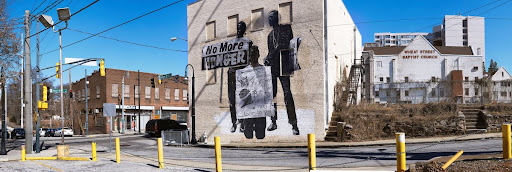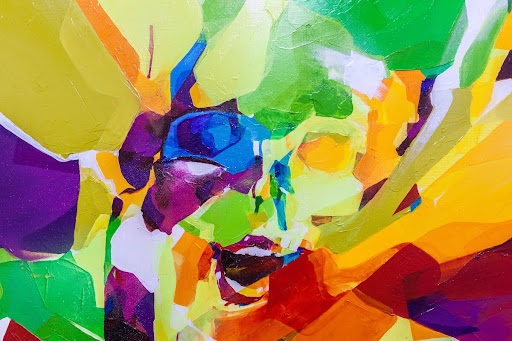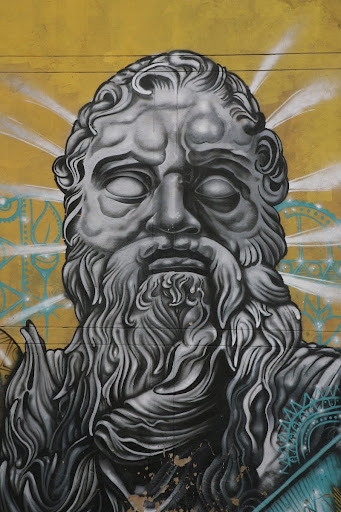
Overview
Title: No More Hunger
Creator: JR
Date: 2013-08-01
Physical Location: Atlanta, GA
Location Created: Atlanta, GA
JR: The Visionary Street Artist
Artist’s Moniker
JR, the acclaimed street artist, operates under a shroud of anonymity, letting his art speak louder than his identity. Renowned for his large-scale murals and impactful installations, JR’s work transcends traditional boundaries, addressing social and cultural issues with a visual eloquence.
No More Hunger: A Mural with a Message
Date and Location
On August 1, 2013, JR left an indelible mark on Atlanta, GA, with the creation of “No More Hunger.” This mural, part of the Living Walls initiative facilitated by The City Speaks Inc., not only transformed the physical landscape of the city but also ignited a dialogue on societal issues.
Imagery from the March on Washington
JR’s “No More Hunger” utilizes wheat paste and features imagery from the historic March on Washington for Jobs and Freedom in Washington D.C. The mural draws from Emory’s SCLC Collection at MARBL, infusing the streets of Atlanta with visual echoes of a pivotal moment in civil rights history.
Living Walls Initiative
Initiative: Living Walls, The City Speaks Inc.
The Living Walls initiative, orchestrated by The City Speaks Inc., serves as a catalyst for the convergence of art and activism. By bringing artists like JR to the forefront, the initiative transforms cityscapes into dynamic canvases, where each mural becomes a statement, provoking thought and conversation.
Visual Impact and Cultural Resonance
Visual Language
JR’s choice of wheat paste as a medium, combined with the powerful imagery from the March on Washington, amplifies the visual impact of “No More Hunger.” The mural becomes a living testament to the ability of street art to communicate complex narratives and evoke emotional responses.
Cultural Significance
By incorporating historical images into the urban fabric, JR’s mural adds a layer of cultural significance to the Sweet Auburn Historic District. The streets become a gallery, and the mural, a narrative, inviting passersby to engage with the rich history encapsulated within its frames.
Conclusion
JR’s “No More Hunger” stands as a testament to the transformative power of street art. Beyond its aesthetic appeal, the mural serves as a visual call to action, urging viewers to reflect on the past, engage with the present, and envision a future free from hunger and injustice. As part of the Living Walls initiative, JR’s contribution to Atlanta’s urban landscape resonates as a beacon of social consciousness, proving that art, when wielded with purpose, has the potential to sow seeds of change.

I am a mural enthusiast and a fervent admirer of street art. Rather than creating murals myself, I am passionate about collecting them. My love for street art knows no bounds. I am dedicated to curating and cherishing these artworks that grace the streets. My collection stands as a testament to my profound appreciation for this form of artistic expression.
read about me



